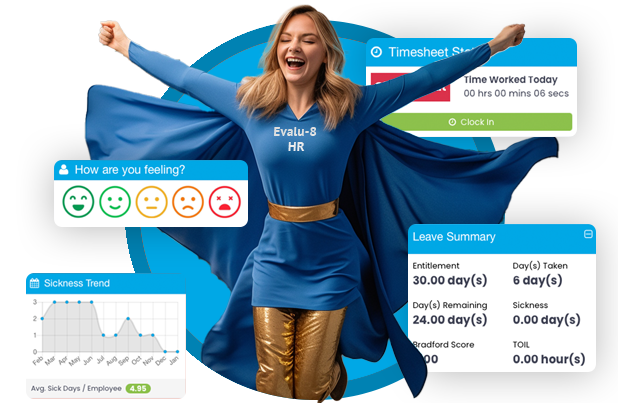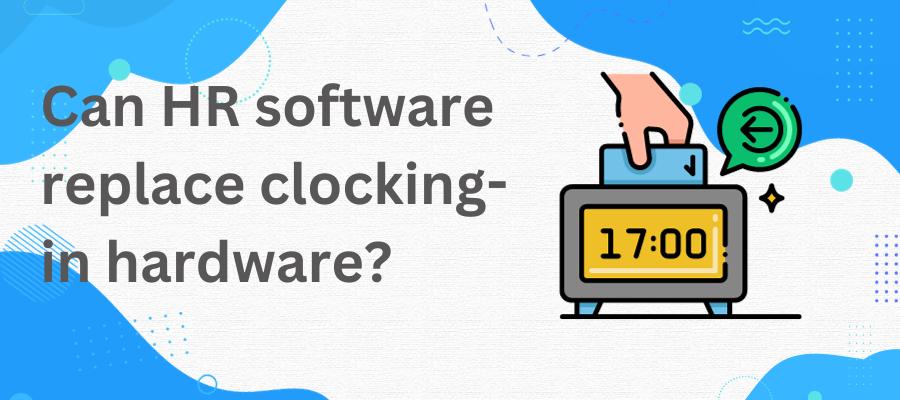Traditional punch clocks have been a staple in the workplace for decades, but it’s becoming increasingly clear that they are no longer the most effective solution for tracking employees’ time. In this article, we will explore the limitations of these outdated systems, the benefits of upgrading to modern time-tracking technology, and how to choose the right solution for your business. So, if you’re still relying on the old punch clock, it might be time for a change!
Understanding the Limitations of Traditional Punch Clocks
Manual time tracking using punch clocks has long been the standard method for monitoring employee hours. However, these systems come with a range of issues that can hinder productivity and accuracy.
While punch clocks have been a reliable tool for tracking employee hours, it is important to understand their limitations and the potential drawbacks they bring to the table. By examining the inefficiencies, hidden costs, and compliance risks associated with traditional punch clocks, businesses can make informed decisions about their time tracking systems.
Inefficiency and Inaccuracy of Manual Time Tracking
One of the most significant drawbacks of manual time tracking is the potential for human error. Employees may forget to punch in or out, leading to inaccurate records. This not only affects the accuracy of their own timekeeping but also impacts the overall reliability of the system. Inaccurate time records can result in incorrect payroll calculations, leading to disgruntled employees and potential legal issues.
Additionally, these systems can be time-consuming, with employees having to queue up to clock in or out. This wasted time can add up, impacting the overall efficiency of your workforce. Imagine a scenario where multiple employees are waiting in line to punch in or out, causing delays and frustration. This not only affects their productivity but also creates a negative work environment.
The Hidden Costs of Punch Clocks
While punch clocks may seem like a cost-effective solution, the truth is that they come with hidden expenses. These include maintenance and repair costs, as well as the need for physical timecards, which can quickly become an administrative burden.
Consider the cost of maintaining and repairing punch clocks. Over time, these devices may require regular maintenance or even replacement, adding to the overall cost of the system. Additionally, physical timecards can easily get lost or damaged, leading to additional expenses for replacement.
Furthermore, the administrative burden of managing physical timecards cannot be overlooked. HR personnel or supervisors must collect, organize, and store these timecards, which can be a time-consuming and tedious task. This administrative overhead takes away valuable time that could be better spent on more strategic HR initiatives.
Compliance Risks Associated with Old Punch Clocks
In today’s business landscape, maintaining compliance with labor laws and regulations is essential. However, traditional punch clocks may not offer the necessary features to ensure compliance. This leaves businesses vulnerable to potential legal issues, such as incorrect wage calculations or failure to accurately track overtime hours.
With changing labor laws and regulations, it is crucial for businesses to have a time tracking system that can adapt and accommodate these changes. Traditional punch clocks often lack the flexibility and customization options required to meet compliance requirements. This can result in costly penalties and legal disputes that can harm a company’s reputation and financial stability.
Moreover, traditional punch clocks may not provide the necessary documentation and reporting features to prove compliance in case of an audit or investigation. This lack of transparency can further expose businesses to compliance risks and potential legal consequences.
In conclusion, while traditional punch clocks have served as the go-to method for time tracking, it is important to recognize their limitations. The inefficiencies, hidden costs, and compliance risks associated with these systems can hinder productivity, accuracy, and legal compliance. As businesses strive for efficiency and accuracy in their time tracking processes, exploring modern and automated alternatives becomes imperative.
The Benefits of Upgrading Your Time Tracking System
Now that we’ve explored the limitations of traditional punch clocks and the evolution of time-tracking technology, let’s delve into the benefits of upgrading to a modern solution.
Improved Accuracy and Efficiency
One of the most significant advantages of modern time-tracking systems is their accuracy. With features like biometric authentication, employees can no longer clock in or out for their colleagues. This ensures that the recorded hours are more reliable and eliminates the potential for time theft.
Moreover, these systems automate the time-tracking process, reducing administrative burden and freeing up valuable resources for more strategic tasks. With accurate and efficient time tracking, businesses can ensure fair compensation for their employees and focus on driving productivity.
Enhanced Employee Accountability
Modern time-tracking systems provide transparency by allowing employees to access their time records. This fosters a sense of ownership and accountability, as employees can easily monitor their own attendance and work hours. This increased transparency can lead to improved punctuality and productivity among your workforce.
Streamlined Payroll Processing
Gone are the days of manually calculating hours and processing payroll. With an integrated time tracking system, payroll processing becomes a breeze. These systems automatically calculate employees’ hours and sync with payroll software, reducing errors and saving significant time. The result is a streamlined and efficient payroll process that benefits both employers and employees.
Choosing the Right Time Tracking Solution for Your Business
Now that you understand the benefits of upgrading your time-tracking system, it’s essential to select the right solution for your business.
Factors to Consider When Selecting a Time Tracking System
When evaluating different time-tracking solutions, consider factors such as ease of use, scalability, integration capabilities, and the level of support provided by the vendor. It’s crucial to choose a system that aligns with your business needs and can grow with your organization.
Understanding the Implementation Process
Implementing a new time-tracking system may seem daunting, but it doesn’t have to be. Take the time to understand the implementation process and ensure that your chosen solution provides comprehensive support and training. This will help ensure a smooth transition and maximize the benefits of your new time tracking system.
The Future of Time Tracking
As technology continues to advance, so does time tracking. Here are some emerging trends in time-tracking technology that are reshaping the way businesses manage employee hours.
Emerging Trends in Time Tracking Technology
One major trend is the rise of mobile time-tracking apps. These apps enable employees to clock in and out using their smartphones, providing convenience and flexibility. Additionally, facial recognition and AI-powered time tracking are becoming more prevalent, offering even greater accuracy and ease of use.
How Advanced Time Tracking Can Transform Your Business
Advanced time-tracking technology has the potential to revolutionize the way businesses operate. By harnessing real-time data and analytics, businesses can gain valuable insights into employee productivity and make data-driven decisions. This increased visibility can lead to optimized workflows, improved resource allocation, and ultimately, a more successful and thriving business.
In conclusion, the days of depending on old punch clocks are numbered. Upgrading to a modern time-tracking system brings a host of benefits, including improved accuracy, enhanced employee accountability, and streamlined payroll processing. By considering the factors involved in choosing the right solution and keeping an eye on future trends, businesses can position themselves for success in the rapidly evolving world of time tracking.
Watch an instant demo
Before we show you the quick demo, we need to make sure you are a real person.

More from the HR Blog



